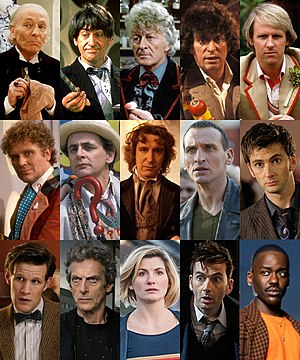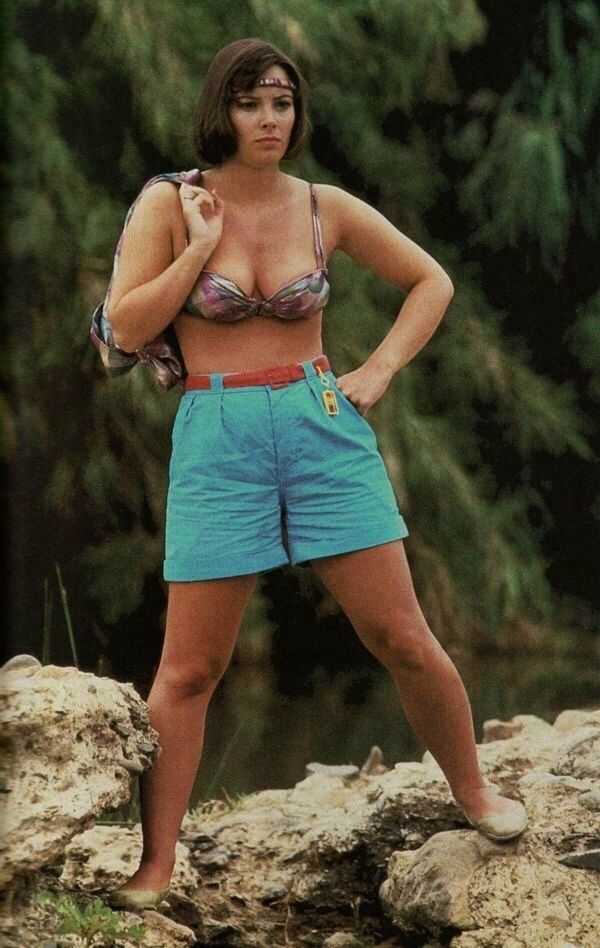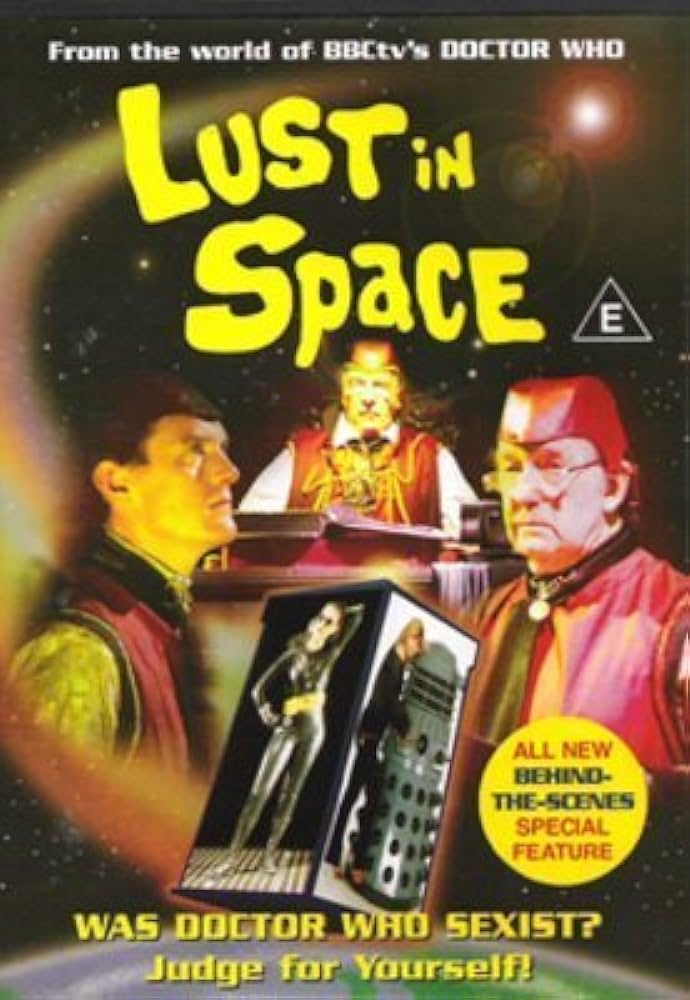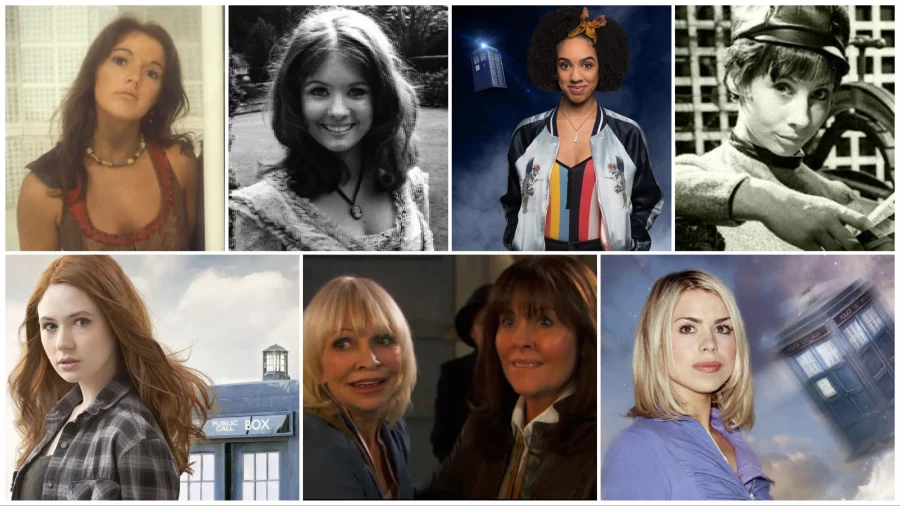
The Male Gaze is an idea presented by Laura Mulvey stating that many mainstream media formats tend to come from the perspective of heterosexual men and creates male heteronormative ways of observing media. Women in media will often be objectified in some way to suit this perspective- reinforcing stereotypes and heteronormative gender roles in many popular pieces of media.
Doctor Who is a long running British sci-fi series, which turned 60 recently, that has an extremely long and convoluted history. With any long running series you are bound to find skeletons in it’s closet and one of the most frequently discussed is it’s treatment of it’s female cast.
It is important to establish that Doctor Who often plays around with concepts of gender and queerness– even in the “classic” series of the show. The Doctor is a character who can change what they look like completely through regeneration- this includes gender as shown with Jodie Whittaker’s recent take on the character.
However this does not mean it is absolved from any criticism as until recently there were very few women writers on the show- in the shows history only around 10- meaning that much of the shows history comes from the perspective of men, which becomes problematic when you consider their treatment of their female characters.
Women in Doctor who have historically played the role of The Doctor’s companion or helper- there to assist The Doctor in whatever they may be doing. Not every companion exactly fits into the role of the male gaze for example The Doctor’s granddaughter Susan and teacher Barbara Wright- two of the first companions in the show. Absolutely not perfect representations(we will talk about “Damsel in Distress” tropes soon) they are developed, entertaining and always help further the plot. This could be because the producer at the time, Verity Lambert, was a woman and was heavily involved in how the show was written. To this day she is still the only female producer/showrunner for the show. There are many companions, for example Sarah-Jane Smith and Liz Shaw, who specifically label themselves feminist within the show and are independent of The Doctor or any men within the story of the episode.
However there are many companions who are absolutely created within the Male Gaze. For example Peri Brown, companion of the Sixth Doctor. During this time John Nathan Turner was producer of the show and a running theme with many of his female characters was with the way they would dress- for example Fifth Doctor companion Tegan Jovanka having to spend many of her stories in a “boob-tube” outfit. Peri Brown is introduced in an inherently sexualised way as the camera moves up her body– along with this she is quick to change outfits into a bikini or tight shirt for little reason other than to sexualise her. Many characters of this era were described by producers as “for the dads“, which is already dehumanising especially considering the young actresses who were being sexualised assumedly by these much older producers and viewers.
But this was the 80s, has it changed?
A similar issue can be seen in the writing of Steven Moffatt- a much more recent example of Doctor Who and the Male Gaze. The way he writes many of his female characters is also objectifying and sexual. The first impression we get of the companion Amy Pond as an adult is that she is a sex-worker and The Doctor is attracted to her- which is rather creepy considering in the scenes before this The Doctor had just encountered her as a child. The first shots of her pan up her legs and in subsequent episodes The Doctor makes reference to her legs.
Another example would be the way the Eleventh Doctor specifically treats Clara Oswald- commenting on her body frequent and especially off putting when you have quotes like “squeezed into a skirt that’s just a little bit too… tight.”

This could be referred to as Scopophilia- “the love of looking”. These examples show how these female characters were shot in a suggestive way to appeal to primarily heterosexual male audiences.

Another frequent issue with how women are perceived in the show’s fanbase is the trope of the “screaming companion who always needs saving“- aka they are seen as “Damsels in Distress“. In fairness many of these companions such as Susan, Vicki, Victoria and others are meant to be younger and there are many headstrong companions such as Liz Shaw, Leela and Tegan it is still a frequent issue within the Classic series of the show specifically.
In Documentary “Lust in Space” we get producer and writer Terrance Dicks insinuating that he inserted “Intentional Sexism” into the show using the ideas of the Damsel in Distress trope in order to “Look admiringly at the Doctor, to be amazed by his brilliance, and, of course–and this is most important–to get captured by the villain, strapped to the circular saw or the railway tracks, scream when she saw the monster, and be rescued by the Doctor and then show appropriate gratitude and tell him how wonderful he was.”
This presents women as powerless and needing the constant support of a man and so turns these women into objects for the men to control.
Yes, Doctor Who is a victim of the Male Gaze and in many episodes it does incorporate sexist tropes and so markets sexist ideals. Considering the audience- especially when the older series was aired- is rather young this could be harmful for their development and can cause them to form sexist ideals of femininity and masculinity.
Some aspects of the show- with it being so old- reflects harmful ideas of women and other marginalised groups that were extremely prominent at the time.
Despite this there is also a lot of good in the show- especially with those stronger female characters. It often depends who is producing and writing and in the newer show- especially with casting a female Doctor- things do seem to be improving with them adding more diverse writing, directing and acting talent.
References:
Mulvey, L. (2006) – Visual Pleasure and Narrative Cinema
Loreck, J. (2016) – Explainer: what does the ‘male gaze’ mean, and what about a female gaze?
Sassatelli, R. (2011) – Interview with Laura Mulvey: Gender, Gaze and Technology in Film Culture
The Time Ladies (2018) – https://thetimeladies.wordpress.com/2018/04/11/womens-bodies-in-doctor-who/
Tardis Eruditorium Vol 2 + 3
Lust in Space (1998)


I like your point of using the film as an example of the MALE Gaze that exists in it. i find that the language of the camera is a suitable means of showing the MALE Gaze, such as some of the over-the-shoulder shots, which are usually used when a woman is making a point. On the other hand, close-ups are often used when a male character speaks, which subconsciously creates male dominance. Nevertheless, with the development of society and the emergence of more and more female directors, this situation will be improved.